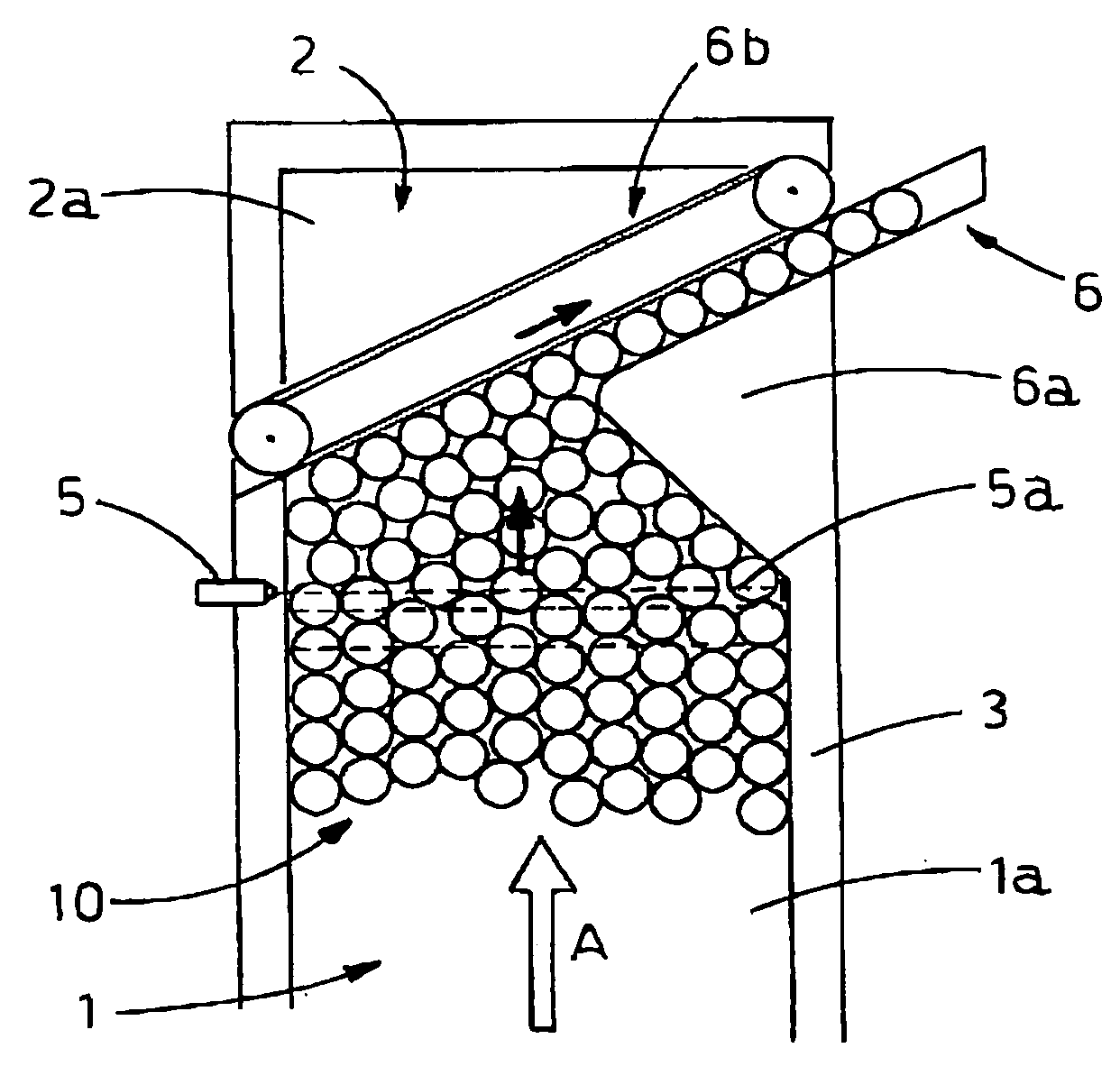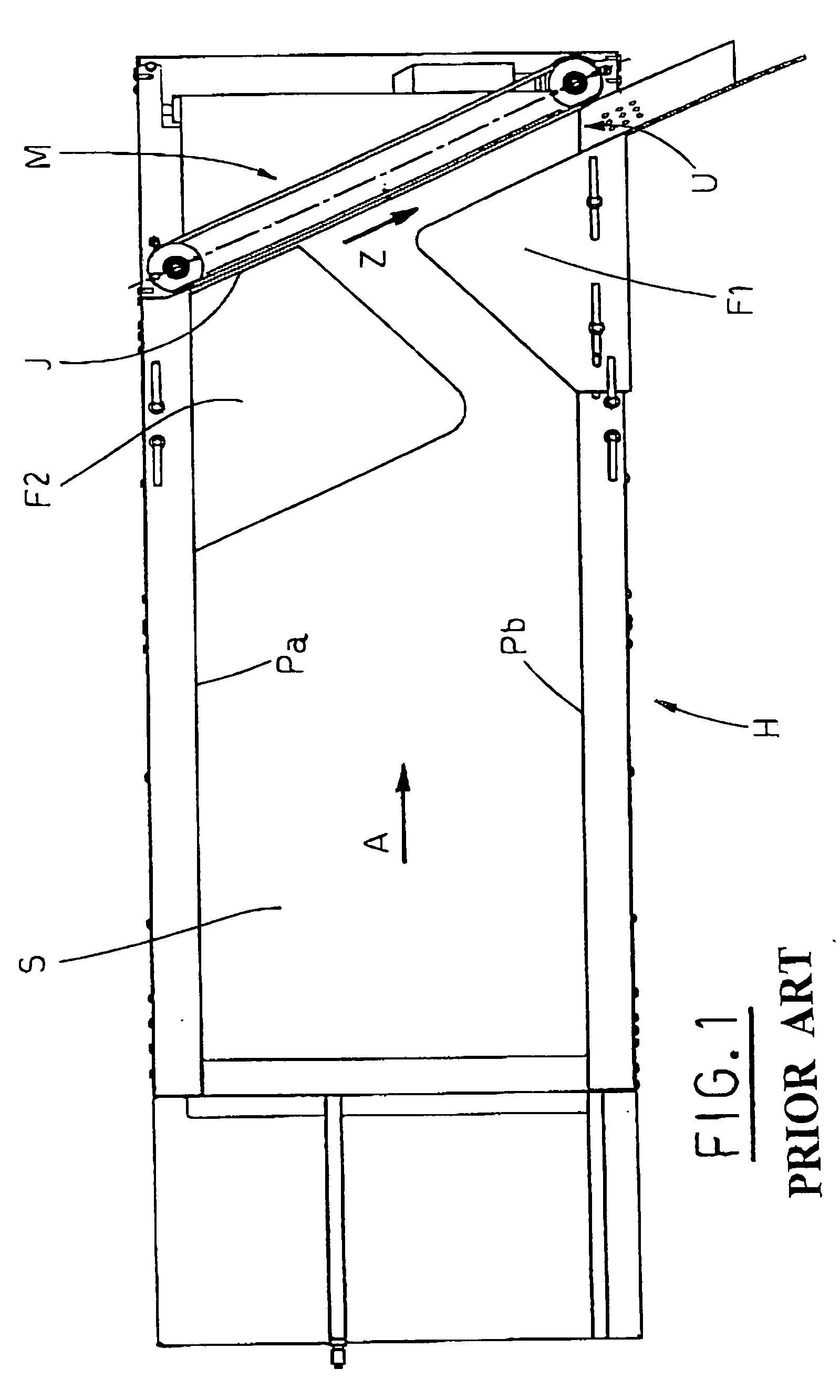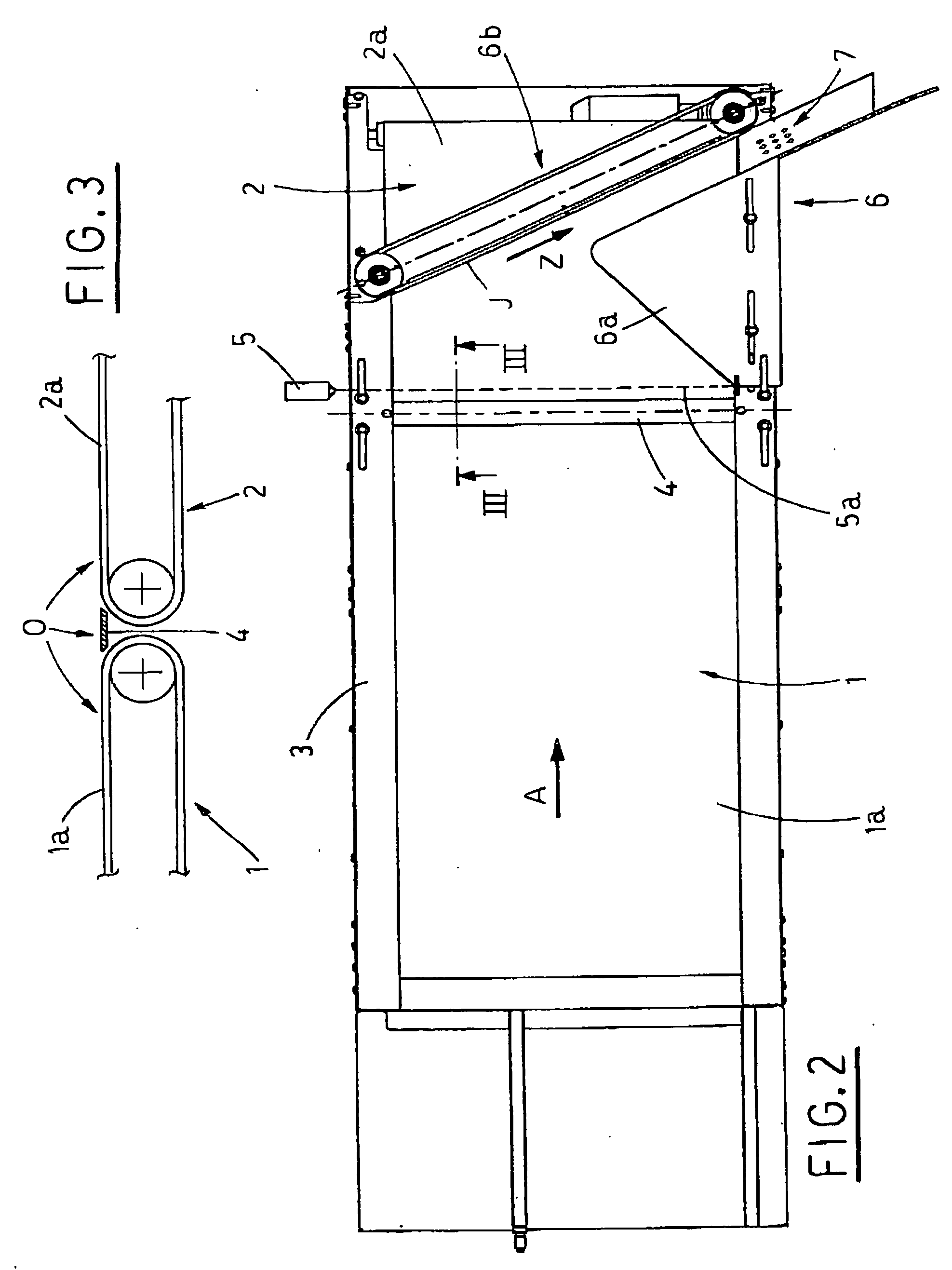Device for conveying and arranging cylindrical elements, such as bottles, in a row
- Summary
- Abstract
- Description
- Claims
- Application Information
AI Technical Summary
Benefits of technology
Problems solved by technology
Method used
Image
Examples
Embodiment Construction
[0026] Having regards to the enclosed Figures, the reference numeral 3 indicates generally a stationary framework, which supports a first conveying belt 1 and a second conveying belt 2.
[0027] A spline 4, transversally interposed between the two conveyors and fastened to the framework 3, stabilizes the continuity of the upper runs 1a, 2a of the first conveying belt 1 and second conveying belt 2, respectively, and lies on the horizontal plane O defined by the runs 1a, 2a.
[0028] The first conveying belt 1 is operated as a consequence of the operation of first motor means, not shown, aimed at operating the relative upper run 1a in a feeding direction A, while the second conveying belt 2 is operated continuously (e.g. at constant speed), in a direction concordant with the feeding direction A, by the activation of second motor means, likewise not shown in Figures.
[0029] The reference numeral 5 indicates sensor means, e.g. optical, situated on one side of the upper run 2a and acting on ...
PUM
 Login to View More
Login to View More Abstract
Description
Claims
Application Information
 Login to View More
Login to View More - R&D
- Intellectual Property
- Life Sciences
- Materials
- Tech Scout
- Unparalleled Data Quality
- Higher Quality Content
- 60% Fewer Hallucinations
Browse by: Latest US Patents, China's latest patents, Technical Efficacy Thesaurus, Application Domain, Technology Topic, Popular Technical Reports.
© 2025 PatSnap. All rights reserved.Legal|Privacy policy|Modern Slavery Act Transparency Statement|Sitemap|About US| Contact US: help@patsnap.com



